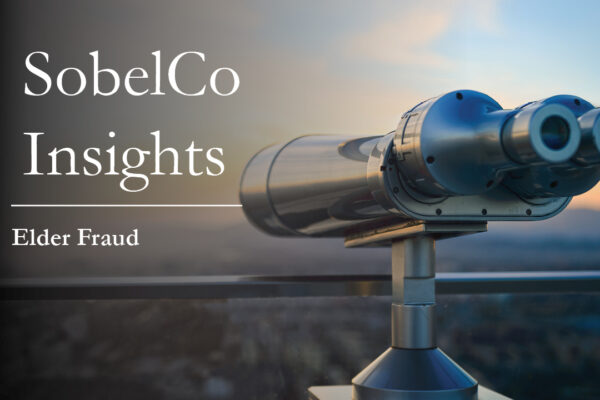
In recent weeks we have published articles focusing on valuation considerations in the food and beverage industry. Our prior topics examined how one would value furniture, equipment, real estate, and liquor licenses, each of which must be addressed separately. In this article we discuss some key factors involved in the valuation of a restaurant business.
Valuing a restaurant is challenging, and one of the first aspects to consider is the type of establishment being valued. There are two main segments in the restaurant industry, full service and limited service. With full service, the patrons generally are seated, order their meals from a server, and pay at the end of the meal. For limited service, the patrons place their orders at a counter, may serve themselves, and pay before they receive their meal. The line between these two types of restaurants has blurred over recent years as business owners adopt different concepts to pursue wider markets. Even convenience stores have entered the space.
Charles Perkins, of the Boston Restaurant Group, is one of the leading restaurant experts in the country, and has divided restaurant concepts into the following categories:
- Fine dining (Ruth’s Chris, Morton’s)
- Casual Dining (Applebee’s, Chili’s, Hennigan’s)
- Dinner House (Outback Steakhouse, Olive Garden)
- Family Style (Denny’s, IHOP, Friendly’s)
- Quick Casual (Panera, Boston Market, Baja Fresh)
- Fast Food (McDonald’s, Wendy’s, Burger King)
One informal method of valuing a business is a “rule of thumb,” which is a simplistic generalization that allows for a quick “back of the envelope” estimate of the value of a business in a certain industry. While it may be tempting for a potential buyer or seller who wishes to save money to base a decision on a rule of thumb, we advise against it, as each business has unique characteristics that are not considered when using this method. Rules of thumb should only be used as a “sanity” check after a professional valuation has been completed. Our observation has been that rules of thumb tend to undervalue good businesses and overvalue those that are underperforming.
Valuation Methodologies
Formal business valuation methodologies include the asset approach, the income approach, and the market approach.
The asset approach involves determining the value of the business based on the value of the assets net of liabilities. This approach is more often used when the assets of the business represent more value than the ongoing operations. The seller may be going out of business or the buyer intends to utilize the assets for an entirely different concept and menu.
The income approach is a way of determining the value of a business by converting anticipated cash flows into a single present amount. Generally, this involves analyzing a company’s financial history as an indication of its future profits and cash flows. The income approach is a common methodology for valuing ongoing businesses.
The market approach compares the subject to similar businesses that have been sold recently to determine a value.
Regardless of the approach to be used, a professional business valuation process considers a wide range of data, including historical and projected income and expenses, assets and liabilities, economic and industry trends, and company specific attributes, such as location, management experience, and goodwill. A credible analysis of value generally requires multiple years of data that will exhibit trends and business cycles. Of course, a newer business will not have a lengthy financial history, and an experienced valuation professional will utilize alternative methods when addressing such a situation. Should the future financial results of the business be expected to vary significantly from the past, forecasted financial data may also be required.
The business valuation process may involve an adjustment, or normalization, of the subject’s income statement and balance sheet. This means that expenses such as rent and salaries, and certain assets, are examined to ascertain whether they represent fair market value, or are consistent with the way similar companies treat them. Items such a Section 179 or accelerated depreciation may be adjusted so they better match the revenue and the economics of the business.
When using the market approach, data on sales of comparable businesses is examined and compared to the subject business, and the value may be expressed as a multiple of sales, cash flow, or earnings before interest, taxes, depreciation, and amortization (“EBITDA”). Independently owned restaurants in the U.S. typically sell for a multiple of sales as opposed to a multiple of cash flow or EBITDA. While the multiple of earnings is a preferred method for most business valuations, independently owned restaurants often receive a high percentage of their revenues in cash and may not have the internal controls to ensure that this cash is appropriately recorded, making it challenging to quantify the actual cash flow of the business.
Assuming that reported sales on a restaurant’s tax return may be the most supportable indicator business performance, the following rules of thumb are representative of the general value of four types of establishments:
- Full Service: 30 to 35% of sales, assuming split of 75% food, 25% beverage;
- Sports Bar: 37% to 42% of sales, assuming split of 60% food, 40% beverage;
- Bars: 50% to 55% of sales, assuming split of 20% food, 80% beverage; and
- Delis: 40% of sales, typically 100% food.
Other factors that may influence the value of a restaurant include:
- Sales – ideally buyers like to see a business with successive annual sales increases in the range of 3% to 5% and a concept appropriate for sustained growth, with a minimal capital investment.
- Cash flow – an adjusted cash flow and the potential for sustained cash flow in a range of 8% to 10% of sales for full service, and 12% to 15% of sales for fast food, after owner compensation at the prevailing rate, is desirable.
- Condition of improvements – buyers often prefer a business with tangible assets that do not show signs of physical deterioration or functional, technological, or economic obsolescence. If the conditions require a buyer to make an initial investment in upgrades or maintenance after the purchase, this cash outlay will be factored into the price, meaning a lower price than otherwise.
- Terms of the lease – buyers fear nothing more than purchasing a business and then losing the lease on the space.. The Small Business Administration, who often finances loans to restaurant owners, requires a business buyer/borrower to secure a minimum 10-year lease upon transfer of ownership. Ideal lease expense should be 5% to 7% of sales for full service, and 8% to 10% for quick service.
- Potential – Buyers are less interested in buying a “steady state” business, but they will pay a premium for a business with potential to grow through the implementation of either a new concept, or under their management.
And finally, while it may be overwhelming to consider the many aspects that go into valuing a restaurant business, often, it may be more beneficial to determine the values of the equipment, real estate, and liquor license separately from the operating business.
SobelCo’s valuation professionals have the expertise and resources to help you evaluate your food and beverage company and achieve your goals.


